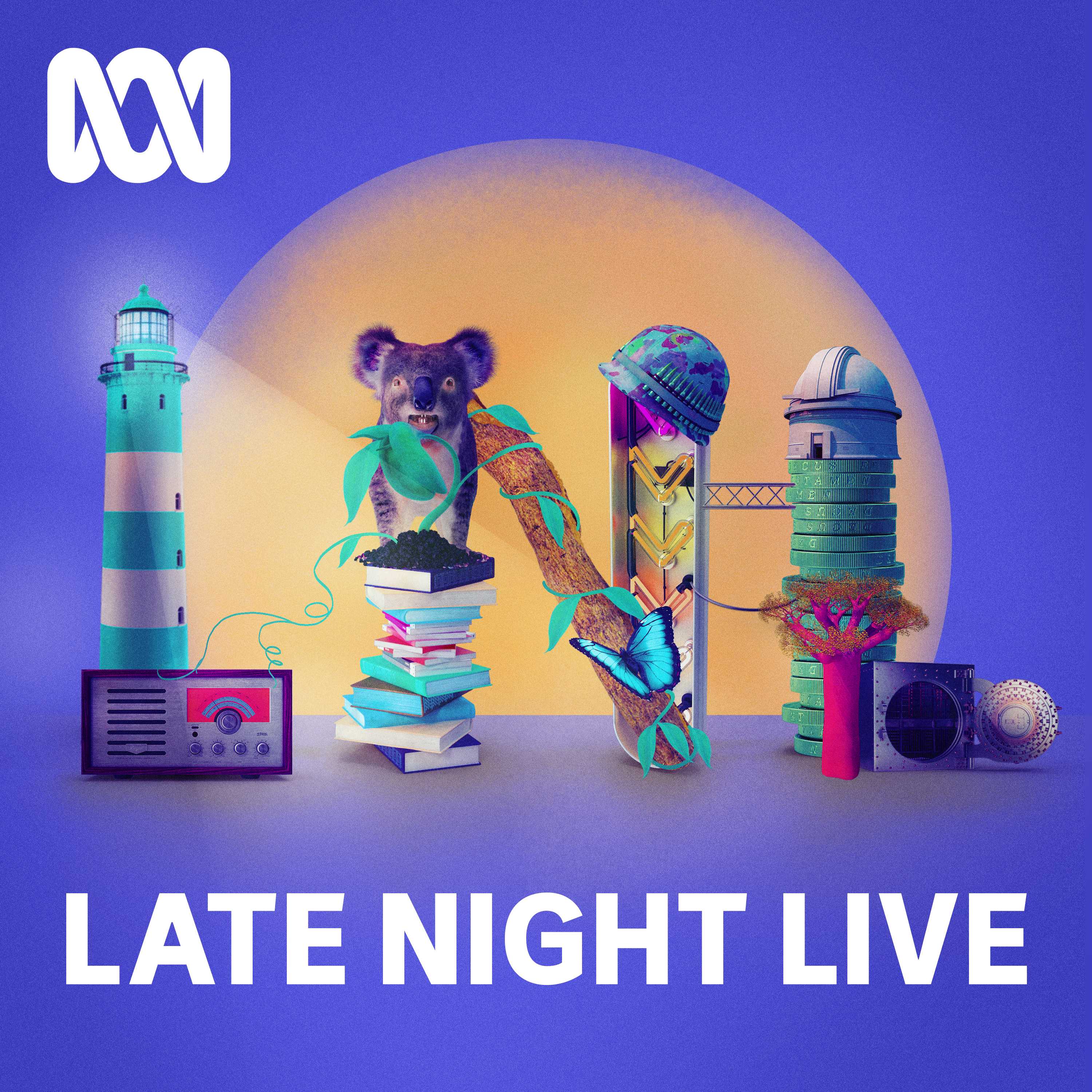
The RegenNarration
The RegenNarration podcast features the stories of a generation that is changing the story, enabling the regeneration of life on this planet. It’s ad-free, freely available and entirely listener-supported. You'll hear from high profile and grass-roots leaders from around Australia and the world, on how they're changing the stories we live by, and the systems we create in their mold. Along with often very personal tales of how they themselves are changing, in the places they call home. With Prime-Ministerial award-winning host, Anthony James.
The RegenNarration
238. Hidden Giants of Shark Bay: Seagrass Secrets, Blue Carbon & Cultural Connections with Professor Gary Kendrick
Professor Gary Kendrick’s great love is the WA coastline and its seagrasses. Gary and colleagues have been at the forefront of seagrass restoration and the blue carbon movement more broadly. And with such a massive extent of coastline featuring globally significant carbon stores, world heritage sites, and deep community and cultural knowledge, the potential for WA – and beyond - is enormous. Gary takes us to one of his favourite parts of WA, to share a little of this spectacular story.
This episode was originally released as ‘Blue Carbon, Conservation Economies & the Great Seagrass Restoration, with Professor Gary Kendrick’.
It was part of a series of nine episodes I produced a few years ago for the Clean State podcast, dedicated to regenerative transitions in my home state of Western Australia. Sadly, the podcast and its host non-profit are no more. But the series of episodes featured such brilliant guests and stories, that are still so very relevant, and not just to West Australians, so we resolved to re-release them here.
To hear the rest of this special series of Clean State episodes, and more stories of regeneration around WA, Australia and the world, follow The RegenNarration wherever podcasts are found, or on the website.
And for more from behind the scenes, become a supporting listener via the links below.
Recorded in one of Gary’s favourite parts of WA, in September 2020.
Title slide: Gary Kendrick (pic: OzFish).
With thanks to the Conservation Council of WA, auspicing organisation for Clean State WA, for permission to re-release this series.
Music:
Eden is Lost, by Selfless Orchestra.
Find more:
The seagrass restoration being done by Gary and colleagues.
The Wirriya Jalyanu (Seagrass) Festival at Shark Bay.
A video of Gary from 2017 talking more about the story and value of seagrass.
Listen to another extraordinary story of seagrass restoration from the south of WA on ep82 of The RegenNarration.
And you can find the Clean State Plan (in full and in summary) towards the bottom of the episode web page linked below.
The RegenNarration is independent, ad-free and freely available, thanks to the generous support of listeners like you.
Please consider becoming a paid subscriber to help keep the show on the road - and gain access to a great community and some exclusive benefits - on Patreon or Substack (where you'll find my writing).
You can also donate directly via the website (avoiding fees) or PayPal.
I hope to see you at an event, and even The RegenNarration shop. And thanks for sharing with friends!
So you can generate a whole economy around looking after the carbon balance of the globe locally, regionally and nationally. Why we don't do it is beyond me.
AJ:G'day and welcome to the Clean State WA podcast. My name's Anthony James from The RegenNarration podcast, on board with you here for this special series dedicated to our home state of Western Australia and the newly released Clean State Jobs Plan. How can we build back better from the coronavirus, avert climate catastrophe and transition to a regenerative, fair and prosperous Western Australia? I speak here with the West Australians getting it done, the thousands of jobs being created, the success being achieved and the enormous opportunities that await. The voice you heard at the top was Professor Gary Kendrick, whose great love is the WA coastline and its seagrasses. Gary and colleagues have been at the forefront of seagrass restoration and the blue carbon movement more broadly, and with such a massive extent of coastline featuring globally significant carbon stores, world heritage sites and deep community and cultural knowledge, the potential for WA is huge. Gary thanks a lot for meeting me here. We're in a special part of WA for you. Where are we and why?
Gary:Well, we're in Bold Park and the reason this is special. This is coastal heathland and it's an area that I grew up in and I walk every weekend with my dog. Beautiful time of year to be here, lots of songs going on from the birds or racket, depending on how you put it and also it's really a good time to look for flowering plants. It's just a beautiful time.
AJ:Oh, yes, we were going to be overlooking the ocean topically enough, but we've had to shelter from a magnificent easterly, which would be awesome if we were in the ocean, but not so much for a podcast. Uh, speaking of the ocean though, you did say that you'd probably ideally have nominated underwater at shark bay for this conversation, but of course, that has its limitations. Let's go straight to shark bay for a moment with the seagrass festival. You've got a big week or so coming up with this new festival, the seagrass festival, up there. Can you tell us a little bit about that, and is it an invitation for people to get up there and join you?
Gary:Oh, it definitely is an invitation. It's called the Wurundjeri Jallianu Festival and that's in Mulguna language, that's seagrasses, and it's probably one of the first seagrass festivals globally. I've never heard of another seagrass festival, no, nor have I. And awesome, and the reason it is so special to the Mulguna and to us is that this is the end of two years worth of research looking at restoring lost seagrasses in that system, and the Mulguna recently got land determination. So they are the custodians of Shark Bay and I've been working with the Mulgna rangers, training them in restoration and how to actually measure things. You know temperature, salinity, that sort of stuff and the elders wanted to have this festival. There you go.
Gary:So what is going to happen? The elders themselves are going to be sitting in the old town hall in Shark Bay telling stories from the past. So this is a real chance. The elders are getting old, so it's really a good chance to capture some of their knowledge. And then outside we're going to have bush tucker cooking and demonstration by an Indigenous chef from Perth. We've got face painting. We've got activities around the sea grasses. Look, there's so much on. There's a band playing down the beach, there's fish cook off at the beach and a lot of art, because this is really about mulgana. Culture and art meets Shark Bay through sea grasses.
AJ:And that's occurring on the middle weekend of the school holidays, first weekend of October. We'll get more into that as we go into the particulars of Shark Bay and your work, but let's start with big picture. A lot of your work now comes under the rubric of blue carbon. Can you give us an idea? I think that's still a bit of a mystery to most people. Give us an idea what it is and how it's relevant to what you're doing.
Gary:Yes, well, let's start at the beginning. A few years ago, about a decade and a half ago, the World Bank was looking at ways and means in which they could offset carbon CO2, into the atmosphere and in the process came up with green carbon, which are growing trees, or brown carbon, which is the carbon captured in soils, and blue carbon is basically our coastal vegetation. So it's sea grasses, salt marshes and mangroves are what's designated as blue carbon. It's really interesting an ex-director of the Oceans Institute at UWA, Carlos Duarte, who now works at KAUST, which is in Saudi Arabia, is the actual father of the whole blue carbon movement. So in WA we were way ahead about a decade ago because Carlos was actually working at the University of Western Australia and pushing the agenda.
Gary:Blue carbon is really cool. I'm going to get the numbers hopefully correct. Cool, I'm going to get the numbers hopefully correct. In our mangroves, seagrasses and salt marshes produce 10 billion kilograms of carbon that is taken out of the atmosphere every year. But in the top one metre of soils of those same forests, of mangroves or meadows of seagrasses, there is a thousand, a billion kilograms buried in those sediments. So the combination of both the sedimentary or brown carbon and the green carbon. The photosynthetic area gives you the blue carbon. So what does that mean? That means that about 10%, or just under 10% of our annual carbon accounting comes from things happening in the ocean, but we don't count it in our carbon accounting for terrestrial systems. Is that right? Yeah, we don't count it at all.
AJ:So WA was a bit of a pioneer in this space in that sense, and its potential is said to be enormous. So much coastline, I guess upwards of of what is it?
Gary:10,000 kilometers of coastline and well, it depends how you measure it, but I always say 25,000 and that includes all the island area as well. Oh yeah, good point. So if you think about it, most of that's actually in the Kimberley. Yes, of course, because we've got those very dissected and and deep coastlines, plus the islands offshore and the Kimberley On our west coast, say the southwest coast. We're talking 2,500 kilometres of coastlines.
AJ:So what's the potential? Give us an idea of the potential of this space. So the conservation, the drawdown, gains of carbon? What about the employment and livelihood aspect of this stuff?
Gary:So this is actually something I feel very, very emotional and strong about. Wa is not about Perth. Wa is regional West Australia and we've traditionally focused all of our regional activities in two major areas agriculture and mining, and oil and gas. The danger of doing that is, as we become more mechanised and robotics take over, there are no jobs in the regions for people. But both Indigenous and European-based people living in the regions need work and they need an opportunity to create their own work, and there's work to be done out there.
Gary:Well, to give you an idea, just with the stuff we're talking about today. Well, to give you an idea with just with the stuff we're talking about today, we can generate many small businesses that are regionally based, that look at restoring our natural environments and maintaining our natural environments through that restoration, and I could go on about terrestrial environments. This is something I feel very strongly about. It's about small business maintaining and growing trees. It's about small business looking after native flora and also fauna in the process and underwater. It's about looking after our seagrasses, our mangroves and our salt marshes, and you can generate income through carbon credits and carbon accounting to actually do that work, so you can generate a whole economy around, looking after the carbon balance off the globe locally, regionally and nationally. Why we don't do it is beyond me.
Gary:Yes we'll probably look into that in more detail another time, and we've done a little bit in episode one as well.
AJ:So.
Gary:I'll give you an example of a business. We're working with the Mulgana Aboriginal Corporation and one of the two things we're doing is we're training in restoration and people go. Well, that's nice, but how does that generate jobs? Well, there are six ranges that work with us. They're employed part of their time working for us. What we'd like to do is to turn that around and create industry that maintains the seagrasses in Shark Bay from an Indigenous perspective. There's a lot of money to be had and there's a lot of industry that can be made just by us being more creative and less focused on the top two industries in the country.
AJ:Yes, and I guess that diversification, the resilience into the systems is just so stark in the wake of COVID that we need to spread and we need to have people in the regions working on the work that needs to be done out there and, of course, the meaning generated for them in the country they love, in the parts of the state that they love. So how do we imagine the frameworks for employment and financing investment out of the work we actually need done on the ground and people in our country?
Gary:Okay, so I'll give you a little background first and then I'll give you some numbers. The background is John Stanton and myself. Dr John Stanton is what I believe is the restoration extraordinaire person in the state and we sat down and figured out that we could continue doing the little bits of restoration we were doing with industry and government funding and we'd be there forever. We basically, if you look at the global loss of seagrasses we're talking about one soccer pitch lost every 30 minutes Lows your mind and that's outside of a burst like the heatwave in 2011,.
Gary:Right, that's completely different than the heatwave. That's just what's going on. Because seagrasses live in sheltered environments and we love sheltered environments all of the major development of large cities etc. Around areas where seagrasses are generally dominant and the seagrasses themselves get impacted by loss of light and increase in nutrient loads. You add temperature to that and you have catastrophes. In Shark Bay 2011, we were up in Shark Bay in February, march that year, doing a project on climate change. And right in the middle of what, march that year, doing a project on climate change, and right in the middle of what we were doing, we had a heat wave. That heat wave pushed temperatures to four degrees Celsius warmer than normal and we saw the wireweed, or amphibolus Antarctica, one of the very characteristic species up there. We call it wireweed because it's got a wiry stem actually defoliated in front of us. So between March and April, we saw about 800 hectares of seagrass in our own study areas just lose all of their leaves.
AJ:And proportionally speaking that was about a quarter or something of all the grass.
Gary:Well, we've actually subsequently measured the total loss over the whole system, over the whole World Heritage Site. We've lost just between 900 and 1000 square kilometres of seagrasses, not hectares, wow. So what do you do when you lose 1000 square kilometres over a period of two years post the heatwave? How do you as a community get mobilised to look after the system? Why would you want to look after the system is another good question. Yes, why is it so important.
Gary:Well, shark Bay is a World Heritage Site, so that means we in the nation have recognised it as a unique vignette of seagrass habitats globally, and it is very famous for that globally. Nationally, it's already a marine park and a national park. So, at the same time as being a World Heritage Site, we recognise it nationally and locally. And why we recognise it is because of the seagrass banks, the macro fauna, the mega fauna, the dolphins that everybody, that everybody loved at Monkey Mire, the beautiful stromatolites that occur in the bottom of a Hamelin pool. I do know most people who go see them and say they just look like rocks, they're alive. But one, they're alive and two, they're a modern analogue of life in the rural early seas. And for me it's always like a pilgrimage when I go there, so that's why Shark Bay needs to be looked after by us.
AJ:And it's cornerstone to fisheries and tourism, and so much so everybody knows, the first large fishery in the state is rock lobster.
Gary:What's the second, do you know? No, it is Shark Bay. It's not one single fishery, it's the multiple fisheries that are fed through the ecosystem that is supported by the seagrasses in Shark Bay. Isn't that pretty cool? Yes, it's very cool. We're talking scallops, we're talking blue crab, we're talking snapper. We're talking bay snapper and ocean snapper. We're not just one group of snapper, we're talking prawns. Those fisheries alone make up the second largest fishery income in the state there you go, okay.
AJ:So what about building these other frameworks for employment and livelihood that we need? You mentioned the carbon offsetting thing, and then what other possibilities are there as well, matey? Well, there are many possibilities.
Gary:I wrote up a little sheet with my colleague, john. Shark Bay is the largest carbon stock reported for any seagrass ecosystem in the world, so put that in context. This is globally an important carbon sink. About 1.3% of all carbon buried in under seagrass meadows is buried under seagrasses in Shark Bay. The depth of sediment the seagrasses have built up over the last four and a half to six thousand years is eight metres, so this basically is a huge burial of carbon. Following the marine heat wave, we lost 36% of the seagrasses. We lost two to nine million tonnes of carbon back into the atmosphere post the loss of that seagrass. That is 4-21% of the annual carbon budget for all of terrestrial Australia. Now the point is we don't count anything in the ocean as part of the carbon budget for Australia. It's all terrestrial. So this is on top of whatever release we had before. Right, that's an oversight.
AJ:This is on top of whatever release we had before. Right Gee, that's an oversight. So if we integrate that into the system, then we can start to recognise the value and generate the employment around the value of what that's bringing to us.
Gary:So we've been mucking about with a couple of companies. The most recent one, south Pole, is an investment firm for carbon accounting and we came up with the numbers of about 16 Australian dollars per tonne of CO2 in the system and that's supposed to increase 25% per annum as we go into the next decade. So the expected revenue from 300,000 hectares or 3,000 square kilometres is approximately $2.4 million Australian per annum. So that's how much it's worth not to touch it. That's just it in the ground.
Gary:With an expected crediting period of 20 years on any carbon credit, this could generate for conservation $50 million over a 20-year period. So this means $2 million a year could be invested in conservation and restoration in shark bay just from selling the carbon buried under it annually. The expected additional income if we get into restoration, if we use that money to restore the lost thousand square kilometers, is approximately 720 thousand dollars each year. So that's the extra amount. So in other words, we could invest two million to get another extra 720 000. So these are numbers that are um that we're playing around with. We're trying to get investors involved who are interested in alternate industries in that region. If you're generating two million dollars, you can employ a lot of people locally to do that work so let's just turn it a little differently.
Gary:That's just the carbon. What we're playing around with is why don't you grow red seaweed? Right, there's a red seaweed called asparagopsis out there that if you feed it to cattle, they stop burping, they stop producing methane. So you actually deal with a source at the source. Now, if you grow the red seaweed which is native to Shark, Bay.
AJ:That's important right, because you don't want to be engineering our next crop of unintended consequences.
Gary:No, exactly you want to fit the system?
Gary:Yes, exactly so. Always look for the native is the secret here. The cool thing about Asparagopsis taxifolia is it's native to the whole of the west coast of West Australia. So it produces a compound called bromiform. If we can feed this to our cows in a large enough amount on pastoral lands, then it reduces their production of methane by 20-30% up to 50% in some experiments. It also has been shown although it's a, it's a cubicle. It's been shown to produce more meat because they're not burping as much. If we can feed this into our pastoral environments we're talking about lands of millions of hectares with cattle on them. If we can feed these sort of compounds into their diet in very, very, very small amounts, then we can reduce the total footprint of our cattle industry across Australia.
AJ:Yeah, so it's very small amounts too. Hey, that would be required.
Gary:It's tiny amounts, it's picograms to milligrams. Now why would you do that with restoration? The thing about restoration is you don't do it once. You've got to go out and you've got to. It's like gardening, it's like farming. You've got to, it's like gardening, it's like farming. You've got to go out and keep an eye on your crop. And one of the thoughts we had is that, since this already grows, this species of red algae already grows with the seagrass. Wow, then we can look at a very simple cropping system where we can actually increase the amount of dollars going into the restoration, or another industry associated with the cattle industry being developed around the restoration focus.
AJ:And a lot of your work has shown that this isn't pie in the sky like restoration is possible. Can you talk a bit about what you've seen by way of restoration and, of course, your pioneering methods, conservation, innovation, if you like? That tend to get less of the light of day than some of the higher tech flashing lights ones, but your particular innovation in this space has completely changed the game in terms of cost and in terms of outcomes. Give us a sense of what you've seen on the ground by way of what is possible.
Gary:I've been very lucky. I've been working in seagrass restoration in West Australia since about the 90s and watched how we basically have evolved from a basically a sprig based approach, where you go out and you take some piece of a seagrass meadow and you replant it. It's a replanting technique that you still need to use as a base technique, but it's totally inefficient. It costs between $32,000 and $3.2 million to restore a hectare that way. So if we're losing a hectare every 60 minutes and it's going to cost us somewhere between $32,000 and $3.2 million $32,000 community doing it, $3.2 million commercial then we're in trouble. So myself and John Statton and a few others, kingsley Dixon from Kings Park, sat down and went why don't we use seeds?
Gary:Seed-based restoration is the innovation on terrestrial lands. How can we do it in the ocean? So we've been exploring this with people from the Virginia Institute of Marine Science. They sowed seeds, they got the whole community out with their boats throwing seeds over the side and they've restored from zero to something like 2.5 million acres or about a million hectares. That's the sort of scale that's appropriate for the loss we're seeing.
Gary:Now in Australia we've trialled that with Posidonia seeds and we now have a community group working out of Coben Sound called Seeds for Snapper. We've actually passed all of our knowledge on to them. We'll still be working with them on the tech side of things, but we're basically involved with Wreckfish West and Oz Fish. Wreckfish West supply the people fishermen love doing community good work and when they go to their snapper grounds they stop halfway over and throw seeds of Posadonia over the side, which then allows us to get deliver not seeds to one hectare but seeds to a thousand hectares. It's completely funded through of all things boating, camping and fishing, environmental surcharge on buying hooks through AusFish and through Wreckfish West licensing funds.
AJ:Different sorts of investments right there for big returns, yeah Yep. So let's return for a moment to the indigenous folk on country leading this festival coming up and what it's meant for them to care for country in this manner and have it legitimized, if you like, through these employment frameworks.
Gary:So one of the biggest problems is the, what we call it, the diaspora. Our policy spread many of these groups around West Australia back in the 50s, 60s and 70s. I don't think I need to talk about the lost generations and the whole process of you know, lantina for Indigenous groups means that they can get back on country, but many times getting back on country, there's no work. There's work to be done but there's no money to be made to do the work.
AJ:No livelihood? Yes, exactly In this current system.
Gary:Yes, so because we've been able to employ young people to stay on country. Two people have moved back to Denham, two young people who now see their futures in Denham, not in Geraldton or in Perth. So, even though that's a very small number, to me that's the start of what could be a real, real tidal wave. AJ: It's the seeds. GK: It's the seeds. And the real issue for me is, I think state government and I'll emphasize it, state government needs to put more behind their words. They have the words, they've just got to go through and follow through. I think we should go into a decade of action where we try to regionalise Western Australia. Otherwise Perth will become a boil on the side of this country. It's getting too big in my view.
AJ:What do you imagine f or Western Australia?
Gary:In terms of blue carbon, we could be the innovators globally. We could have multiple small to medium term companies working regionally, funded both internally from their own products, but also funded for growth by big industry and government. AJ: Do the individuals have a role to play? GK: Well, my experience is always in the creation of the ideas, so many of the people who'll be listening to this podcast have some really great ideas, probably called crazy ideas by their friends. So here we go. There's a lot of crazy ideas out there. Come, send your crazy ideas back to the podcast.
AJ:Very good, I like it. Gary, thanks a lot for speaking with me. It's been terrific. GK: Oh, thanks, mate. AJ: That was Professor Gary Kendrick, leading figure in seagrass restoration and the blue carbon economy, on location in Bold Park near City Beach. For more on Gary, the Widiagalianu Seagrass Festival, Clean State WA, and how you can support the jobs plan or get involved with climate initiatives and other action in your community, see the links in the show notes and, of course, to hear the rest of this series, subscribe to the Clean State podcast on your favourite app or head to the Clean State website. The music you're hearing is by Selfless Orchestra, an emergence of WA musicians inspired by issues of social and environmental justice. My name's Anthony James. Thanks for listening.
Podcasts we love
Check out these other fine podcasts recommended by us, not an algorithm.

Team Human
Douglas Rushkoff
7am
Solstice Media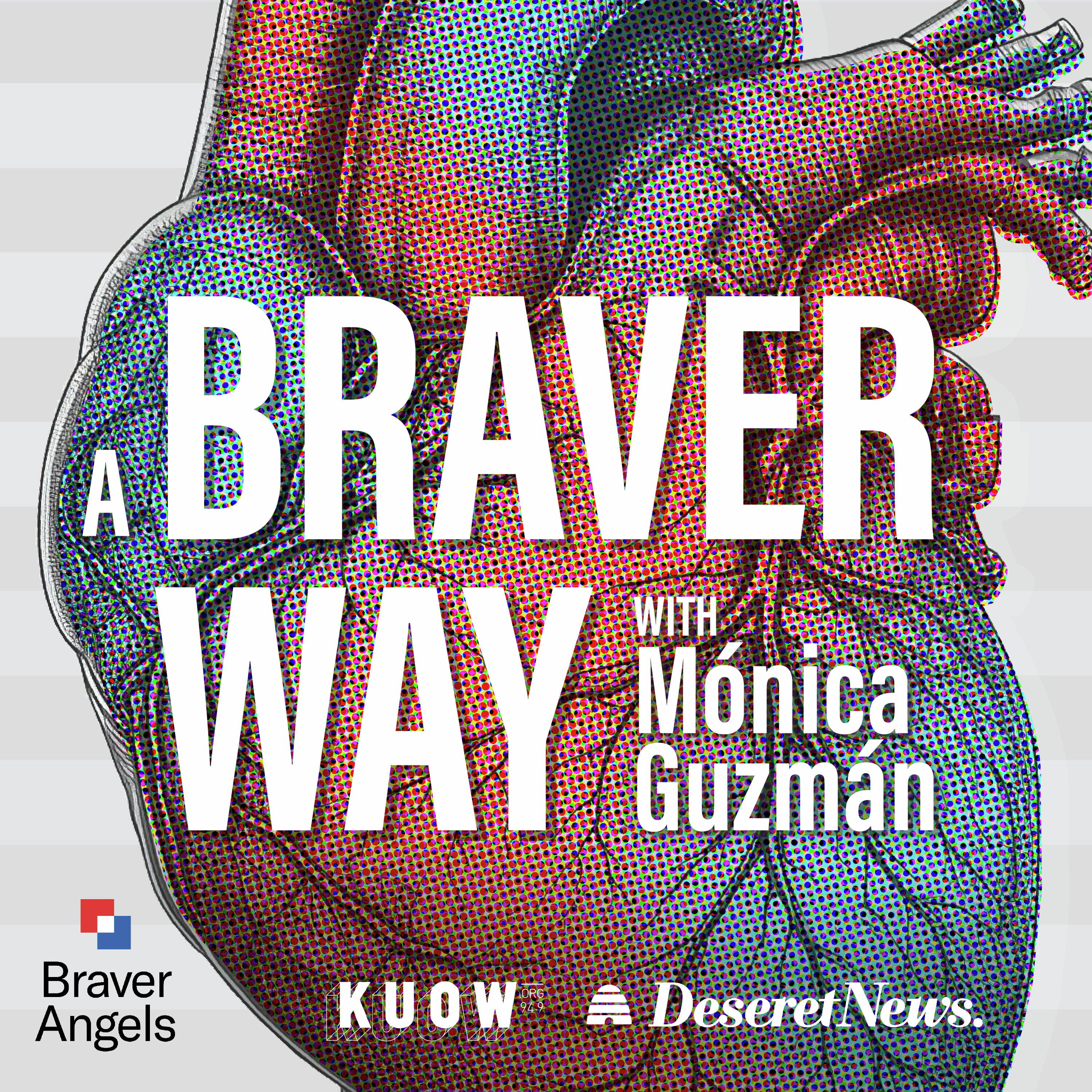
A Braver Way
Monica Guzman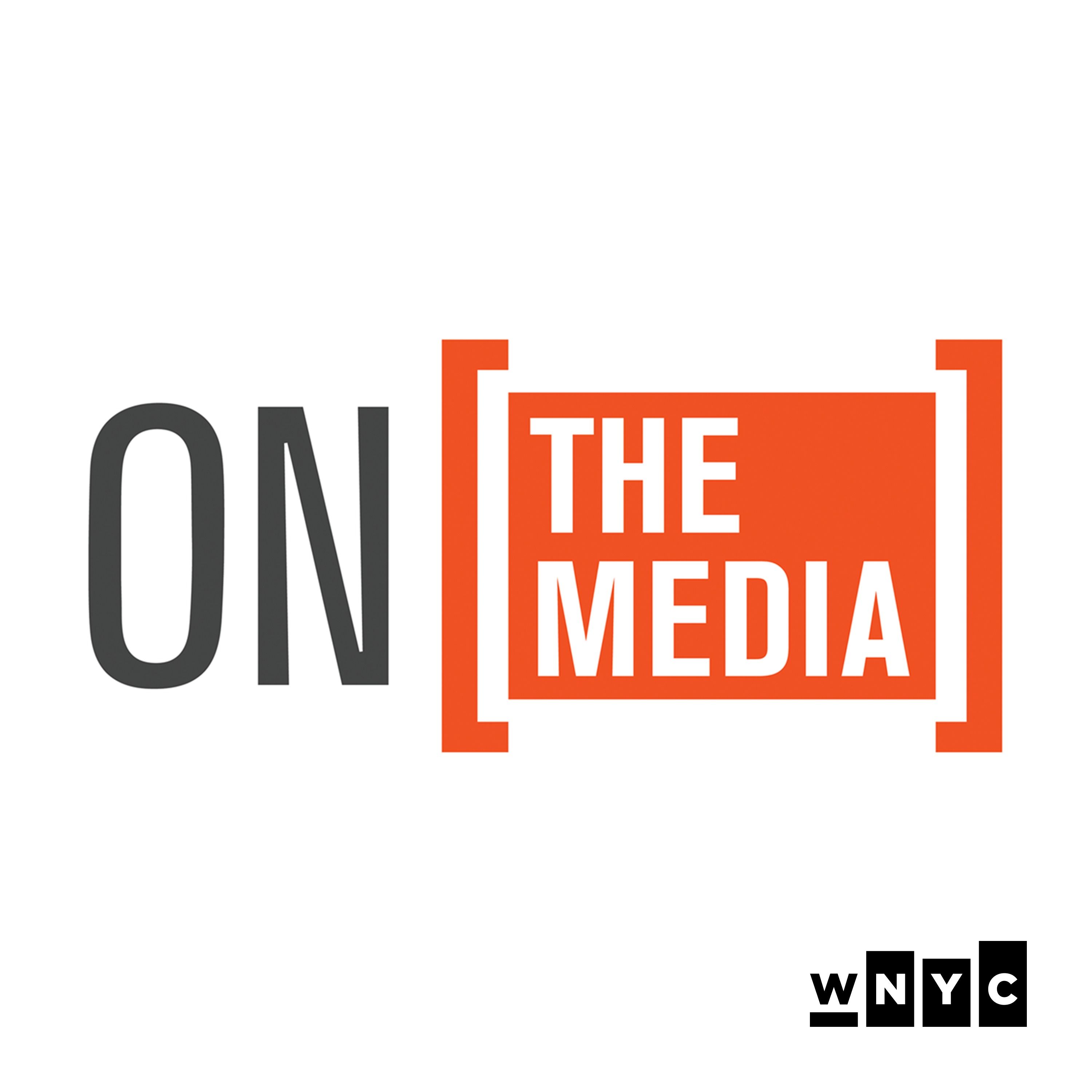
On the Media
WNYC Studios
Aboriginal Way
Aboriginal Way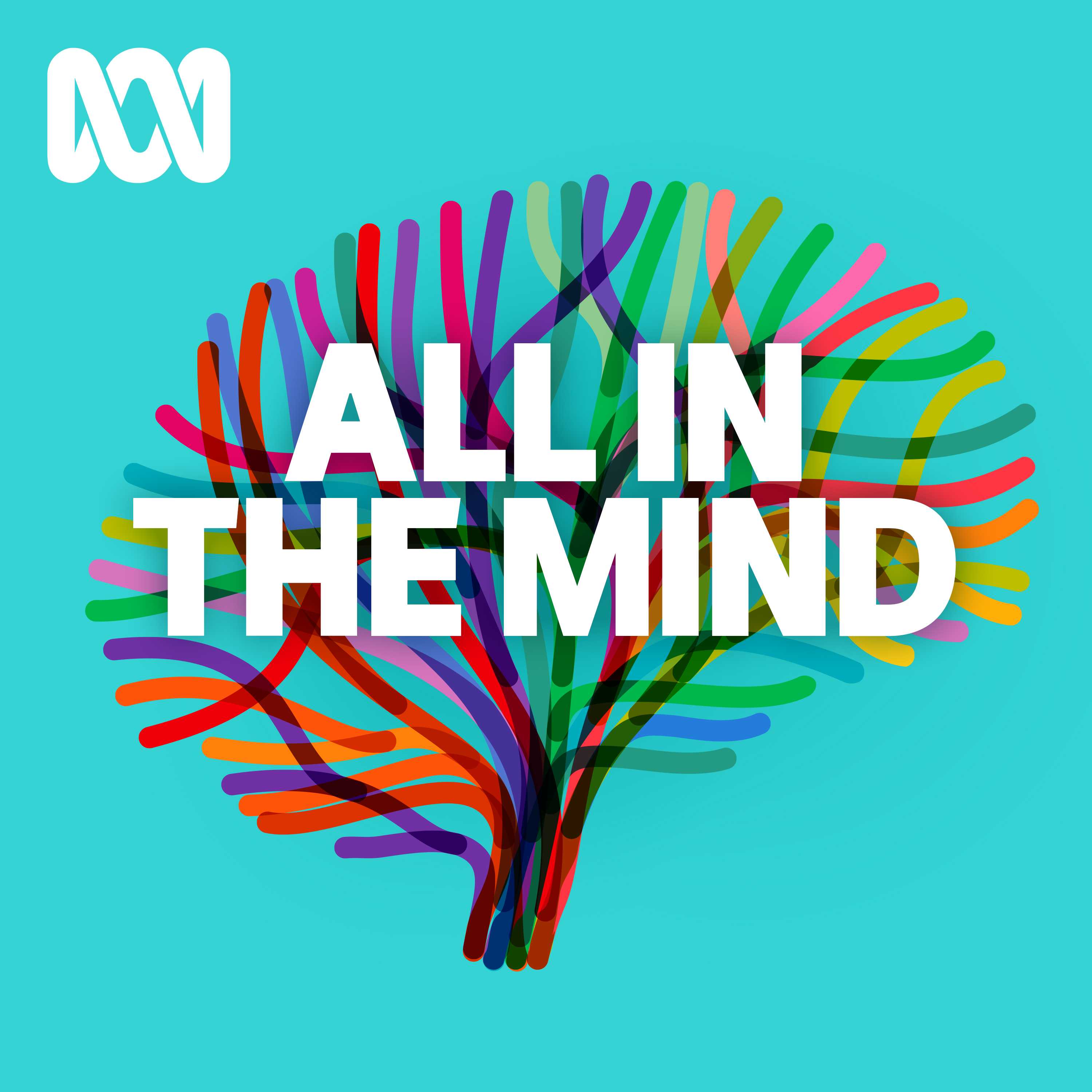
All In The Mind
ABC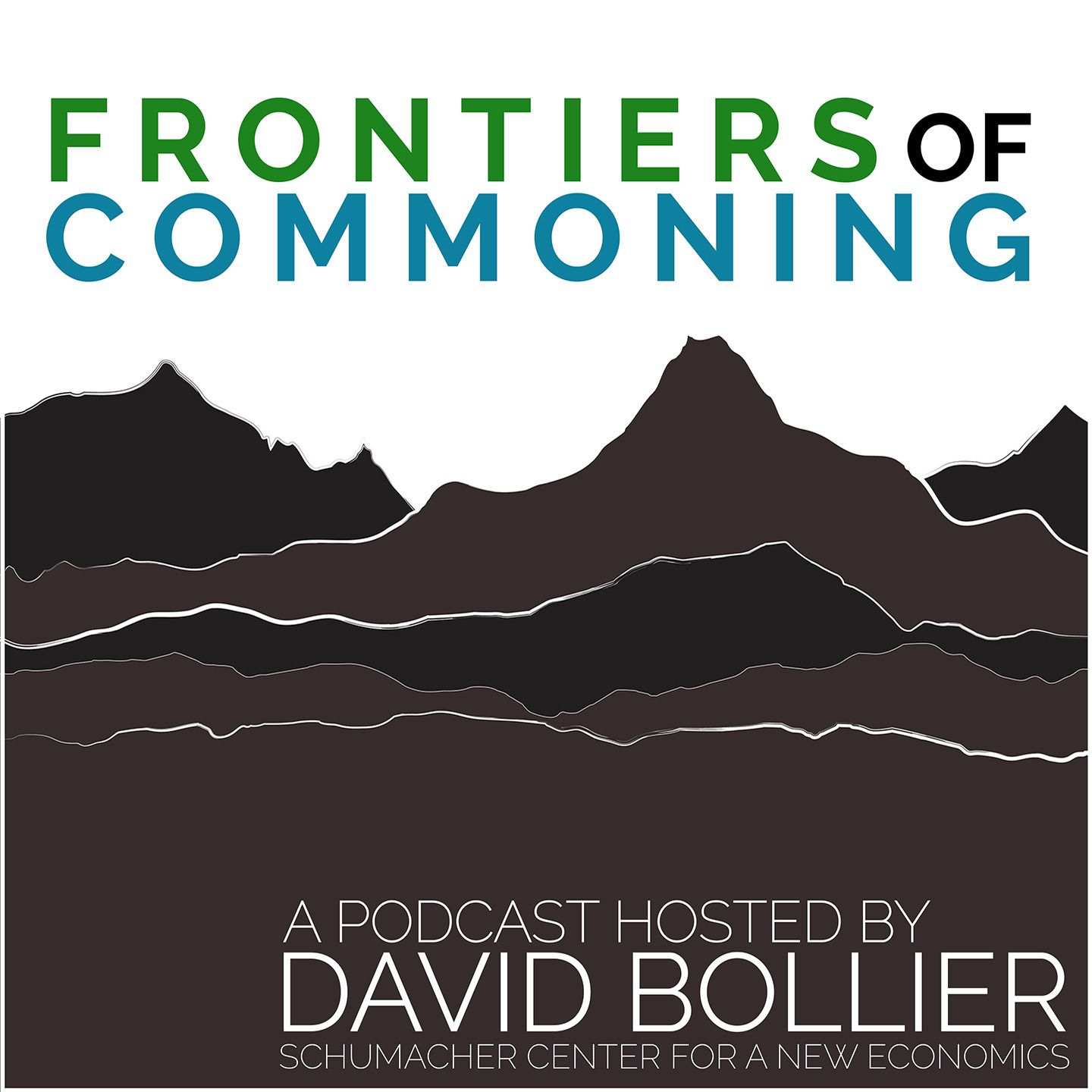
Frontiers of Commoning, with David Bollier
The Schumacher Center for a New Economics, David Bollier
Futuresteading
Jade Miles
The Lindisfarne Tapes
The Schumacher Center for a New Economics
Buzzcast
Buzzsprout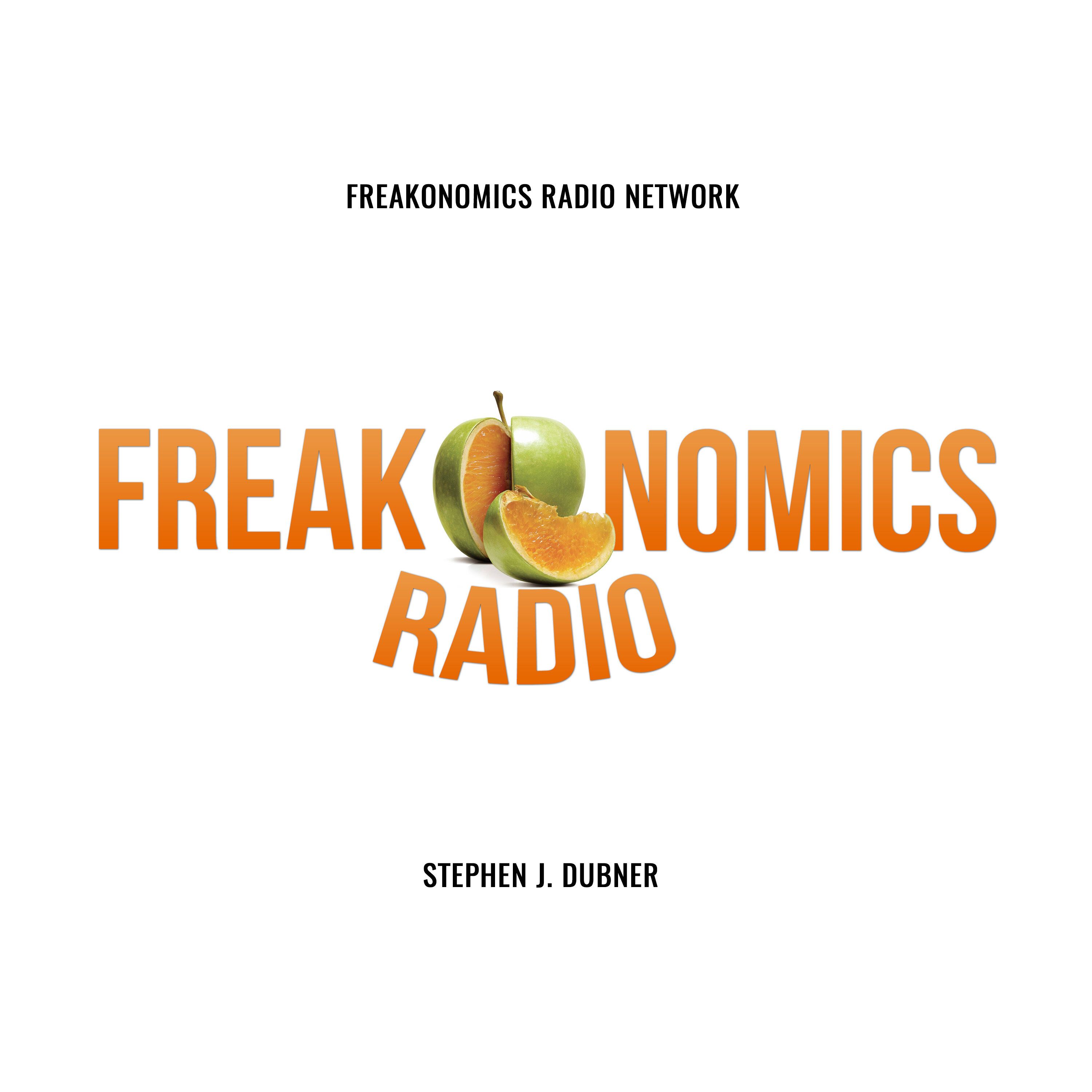
Freakonomics Radio
Freakonomics Radio + Stitcher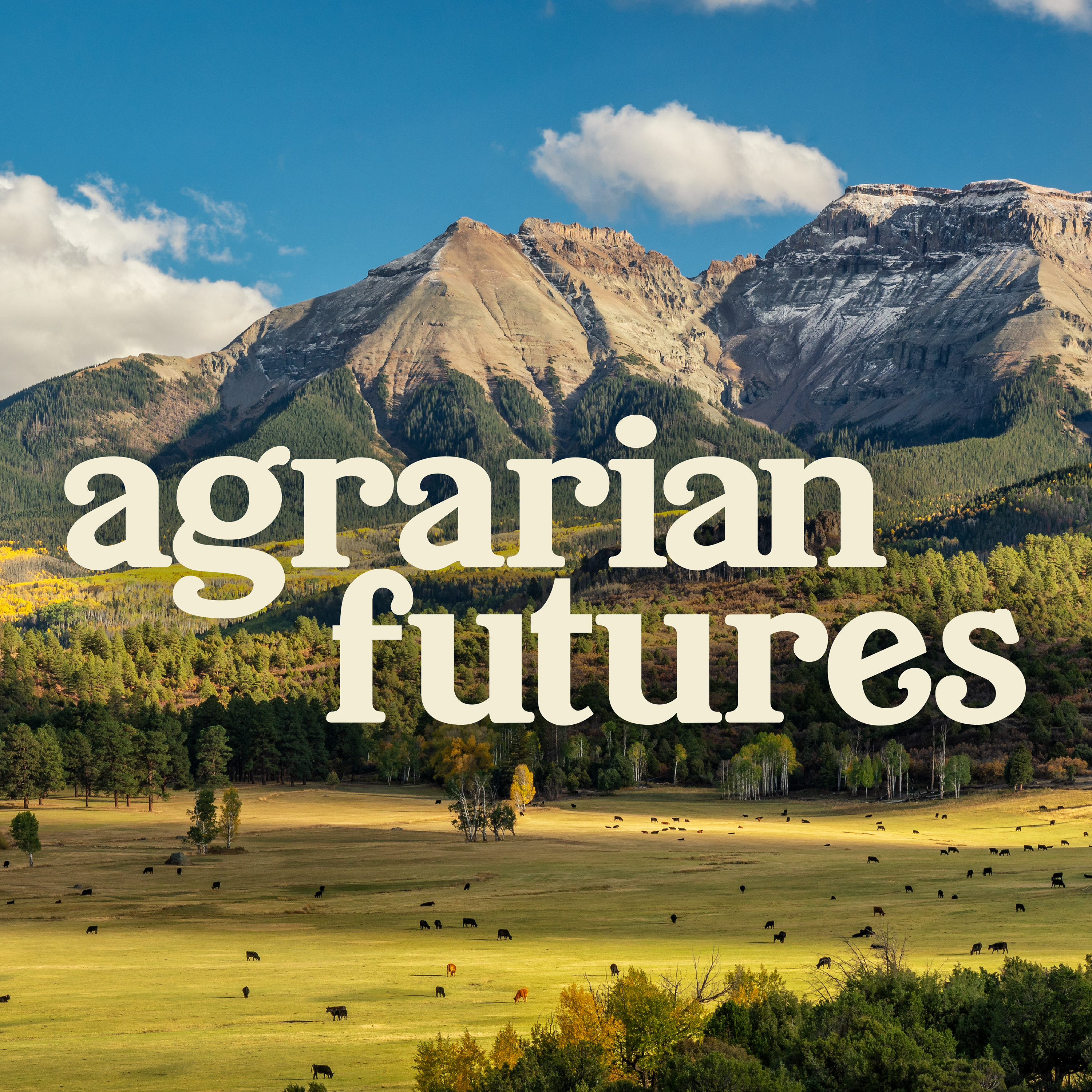
Agrarian Futures
Agrarian Futures
Mountain & Prairie with Ed Roberson
Ed Roberson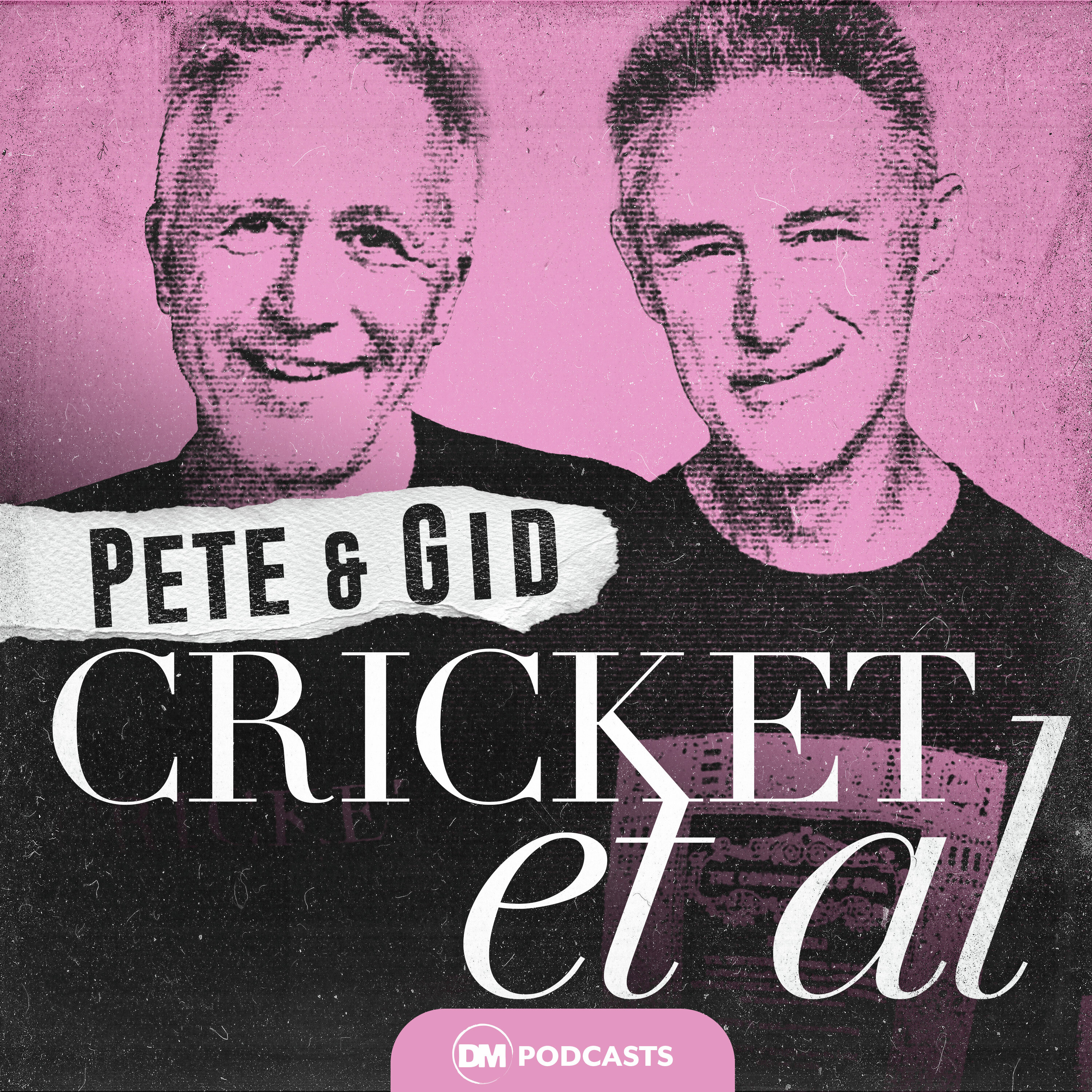
Cricket Et Al
Cricket Et Al
Broken Ground
Southern Environmental Law Center
Lost Prophets
Elias Crim & Pete DavisConversations
ABC

